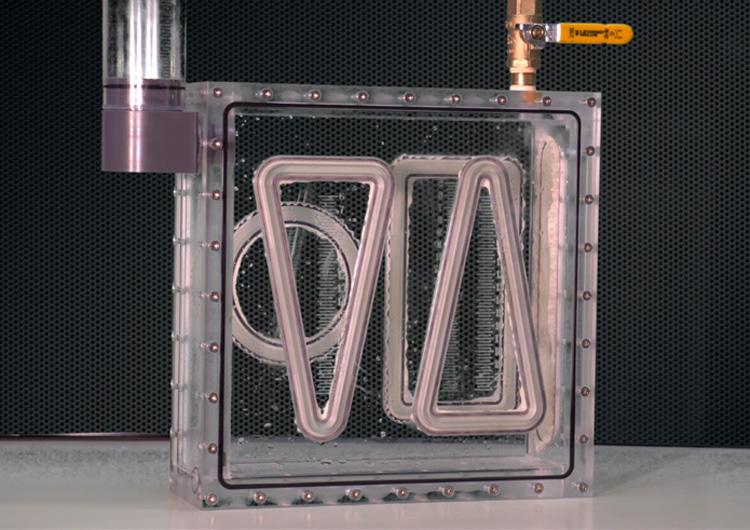Activity Overview
This activity allows students to investigate hydrostatic pressures on surfaces of various geometries. They can measure the total hydrostatic force and find its the center of pressure, and they can compare these values with those calculated by an associated spreadsheet.

Learning Objectives
By the end of the activity, students should be able to:
- Explain how fluid pressure changes with depth
- Measure the hydrostatic force on a panel using a mechanical force gauge
- Experimentally find the center of pressure (COP) of a hydrostatically-loaded panel
- Describe how the magnitude of the total hydrostatic force on a panel changes with water depth
- Explain why the location of the COP on a panel changes when the water depth is changed
- Describe how the forces and COPs associated with rectangular, circular and triangular panels differ
- Use a spreadsheet to calculate hydrostatic force and COP, and compare these with experimental values
- Explain why the COP location changes when a vertical panel is made horizontal (The panels can be given a horizontal orientation by tipping the pressure box onto its side, while at the same time twisting the pressure tube so that it remains vertical.)
- Discuss how contracts can facilitate attainment of collective goals
And, if the Contract was used,
Tips for Using the Activity
Students should be encouraged to enjoy the Activity.
They should not be rushed or under pressure to obtain the �correct answer� or a high grade.
Instead, they should be encouraged to explore, and figure out how forces on a rigid body must interact for equilibrium to exist.
Equipment Design
The equipment was designed to be simple and intuitive to operate, informative to the students, and durable.
Additional Information
See the Downloadables section for more information on this activity.